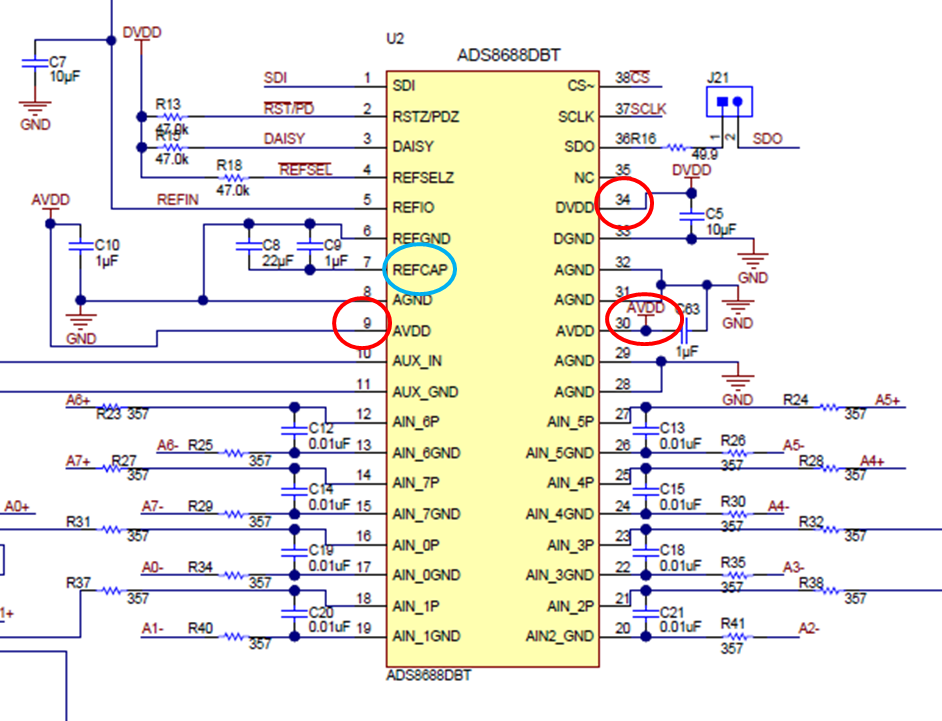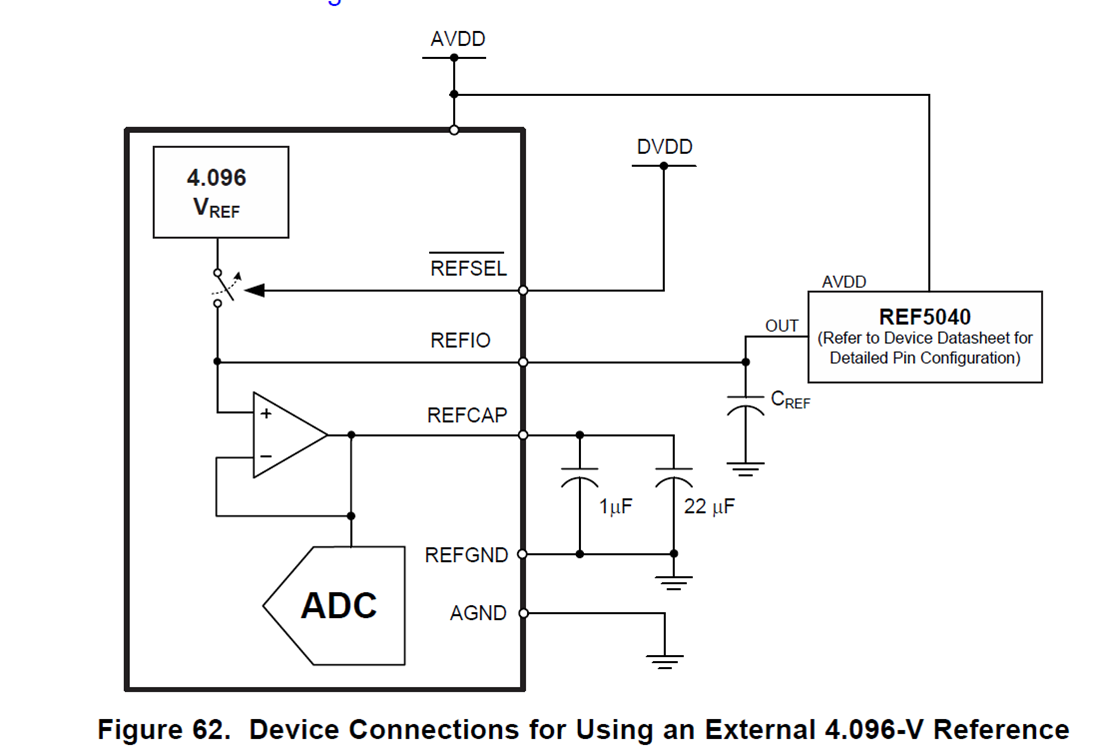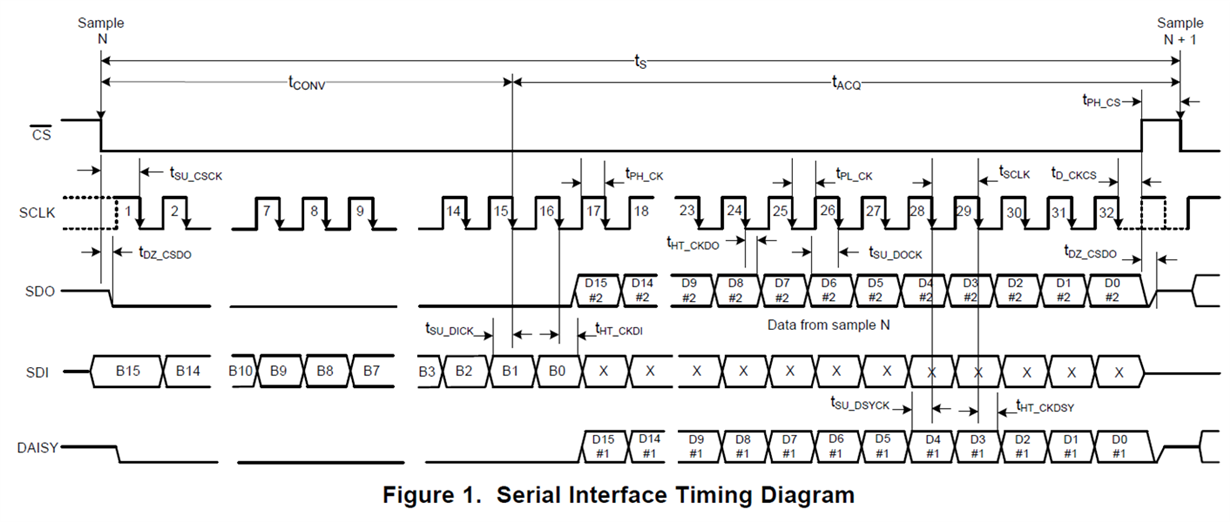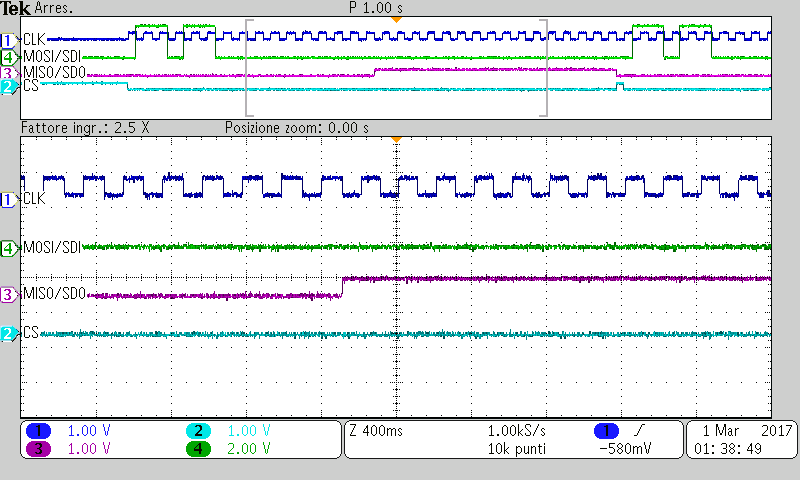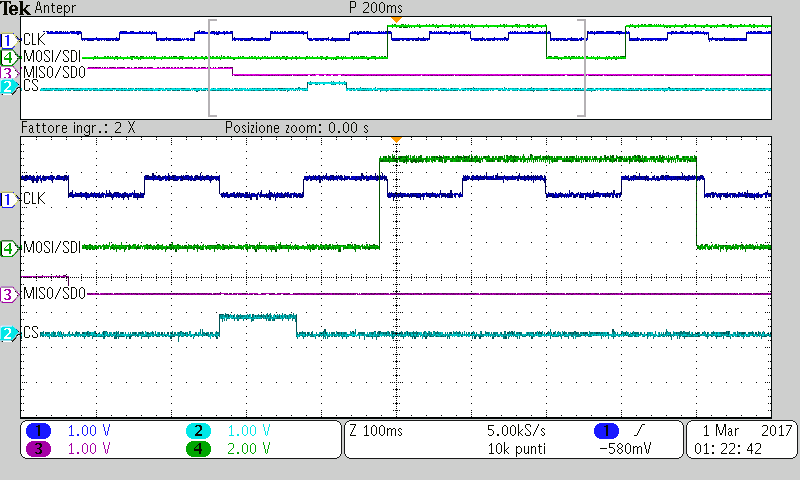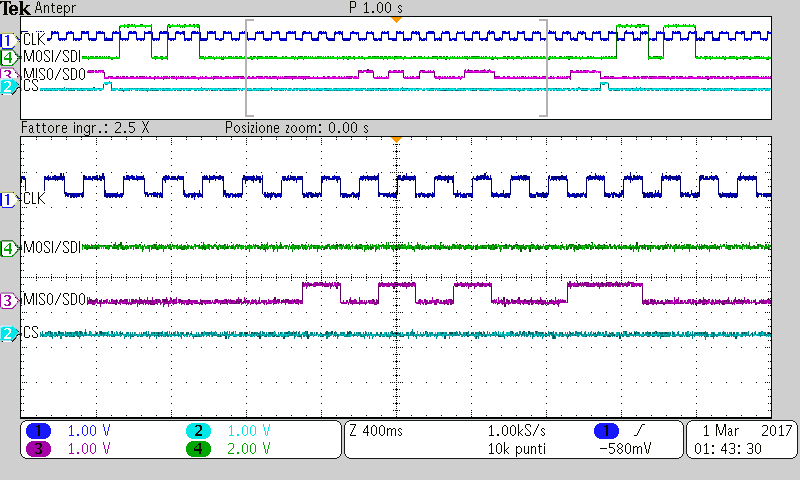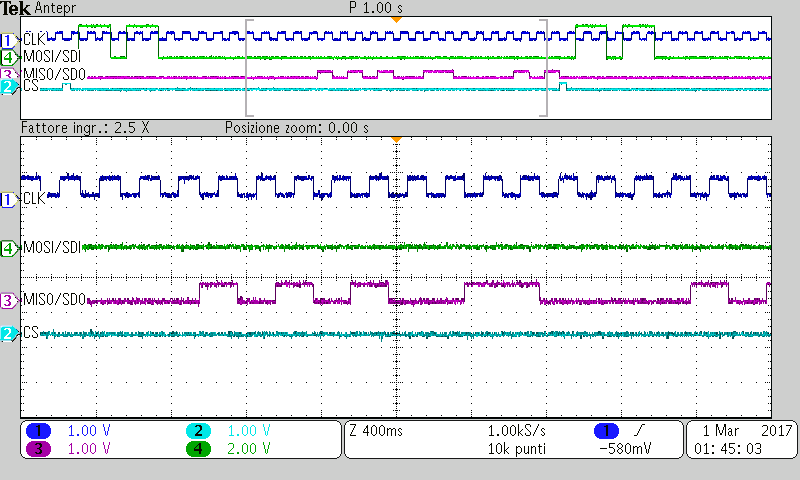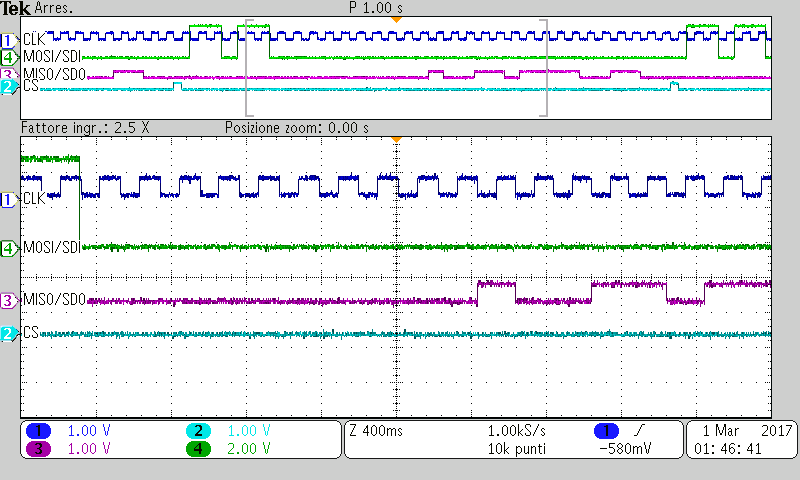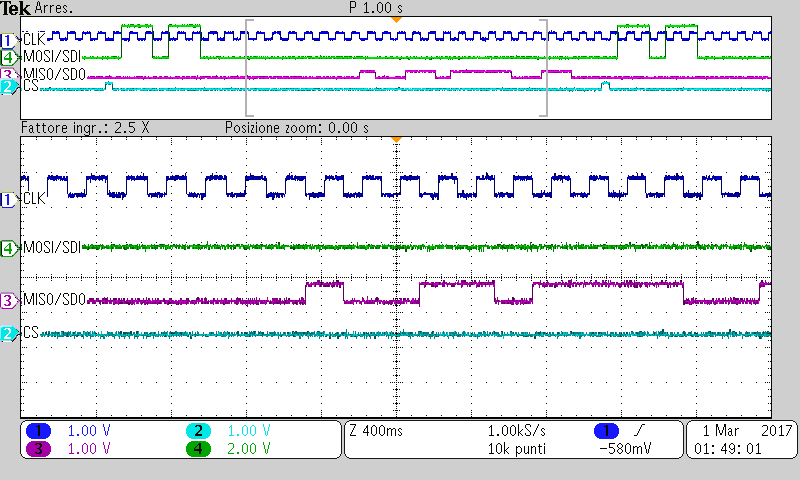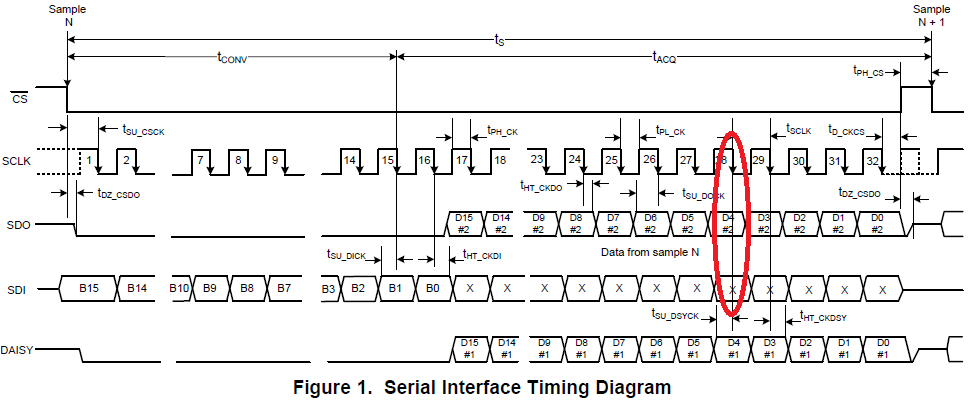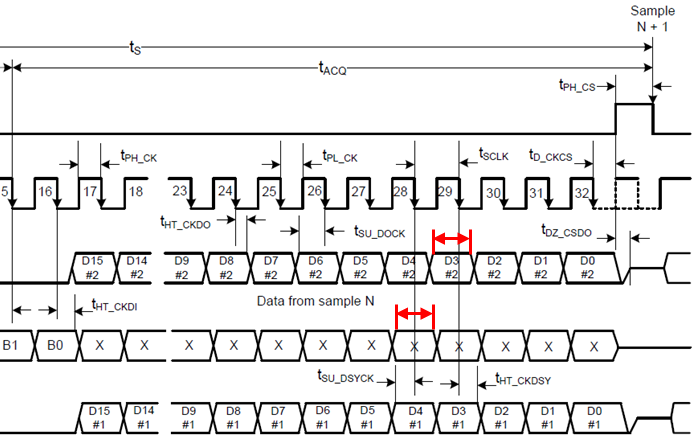Other Parts Discussed in Thread: ADS8688
I configured my ADSEVM for a SPI communication with a host microcontroller.
In my configuration the ADSEVM is the only SLAVE of my MASTER which is the MicroControllerUnit (Arduino UNO). I want to use an internal reference.
I would like to know if I did right connection about these pins.
⁓RST/⁓PD pin
I read on the data of ADS8688 (only the ADC) that this pin can be used to set the ADS in Power Down or Reset Mode by setting it DOWN for a certain period of time. But I also saw that i can enter in this mode by using the SDI: so I decided to short it to 3.3V supply from the microcontroller(which supply the ADSEVM trough the DVDD pin).
I "got" this signal from the connectors J1, and I would like to know which i have to do with the connectors from J3.
DAISY
As i said, I don' t have other slaves, so i shorted it to ground.
⁓REFSEL
As I said, I want to use an internal reference, so I shorted it to ground.
AGND & DGND
I suppose, looking the schematics that both of them are connected to pin GND. I shorted to ground of the microcontroller just the GND which is located up the AVDD pin.
AVDD & DVDD
I connected the AVDD to 5V and the DVDD to 3.3V supplies of MCU. Do I need to supply the ADSEVM by using other pins.
I finally use pins SDI SDO CD and SCLK as SPI Protocol request.
I didn' t make other connections.
Notes:
I will attach a "raw" schematic to be as clear as possible. I will use your draw from the datasheet.
I was able to use the GND , AVDD, DVDD of the ADS by soldering/welding this pin to three different wires. 



